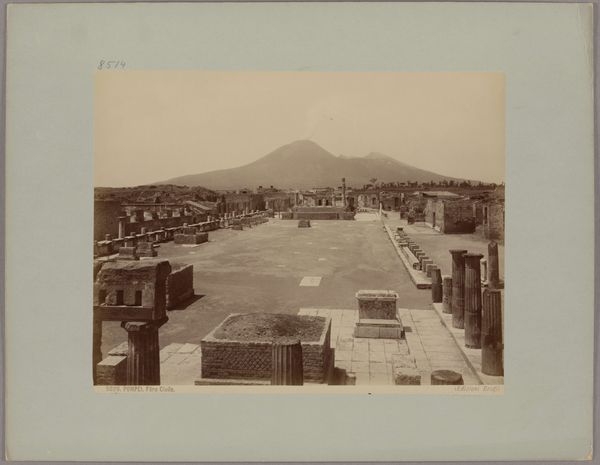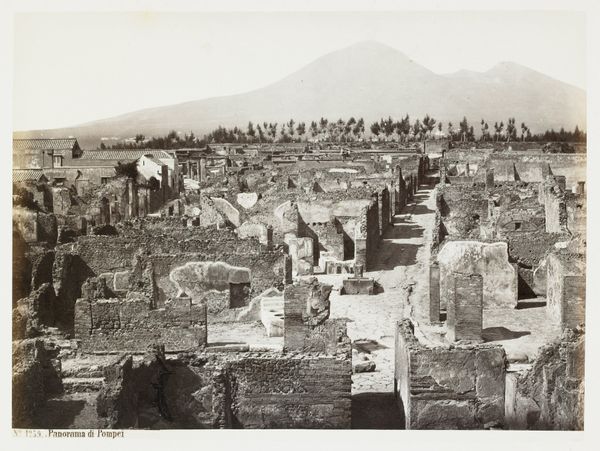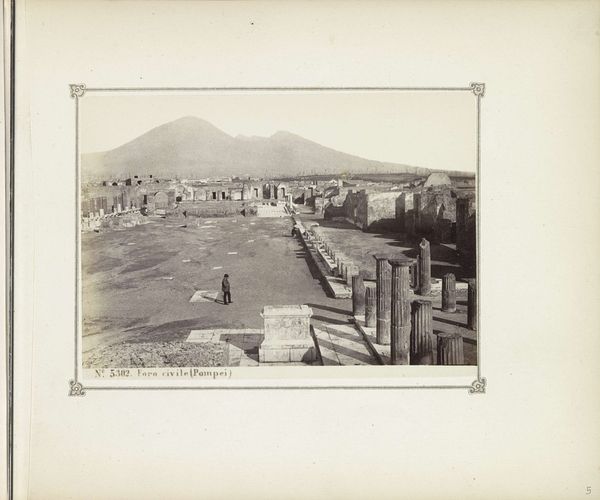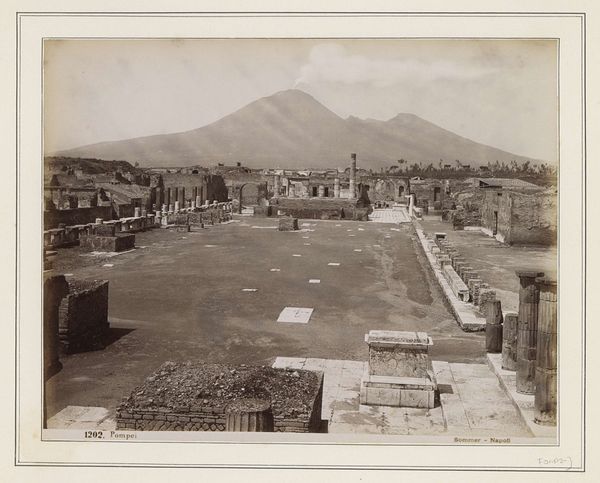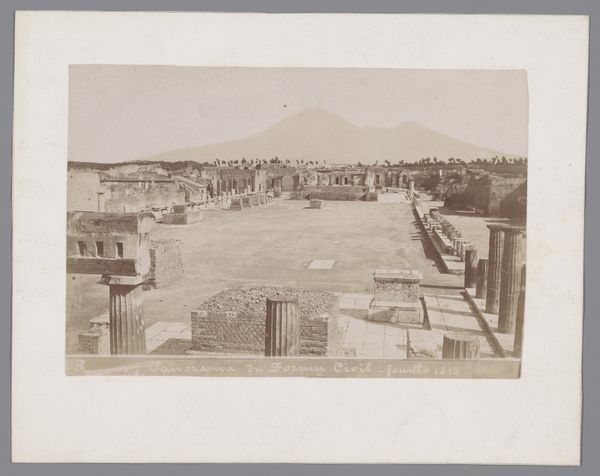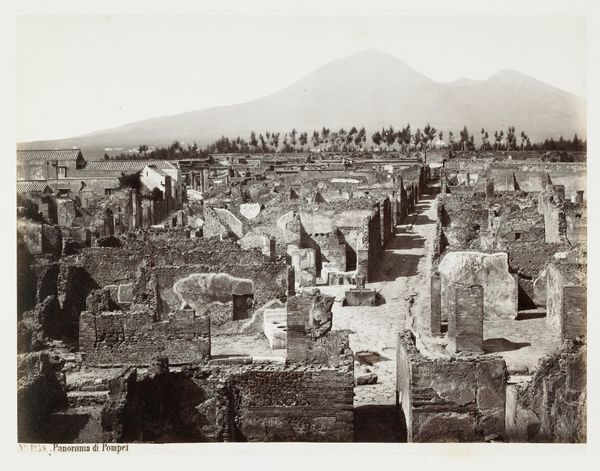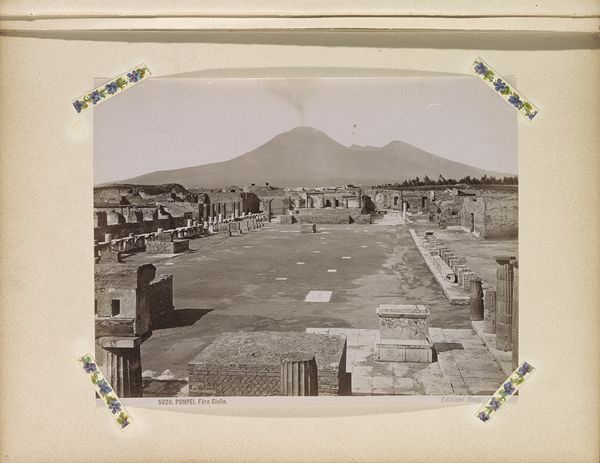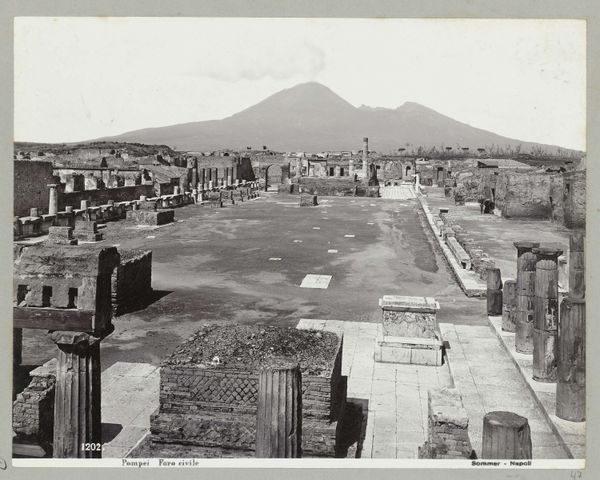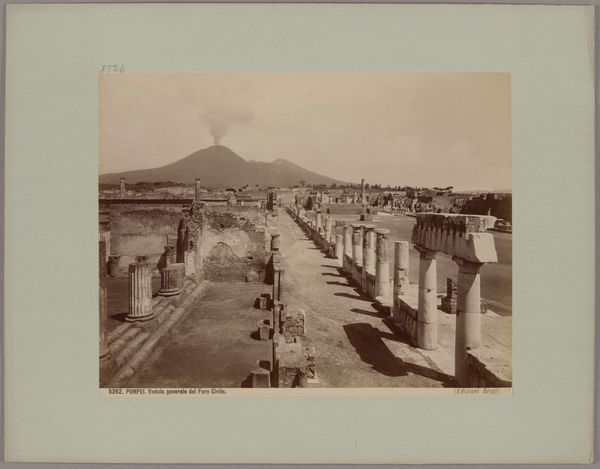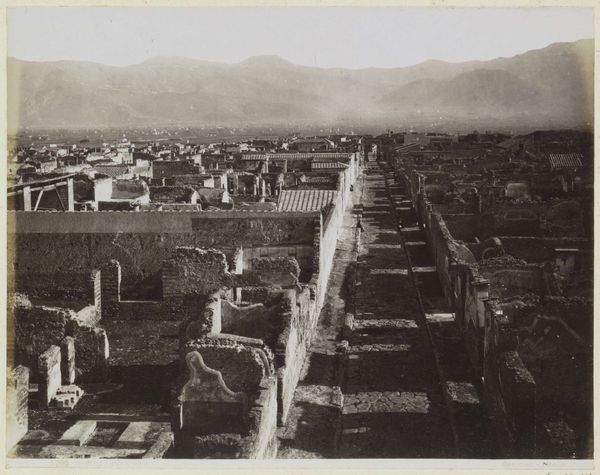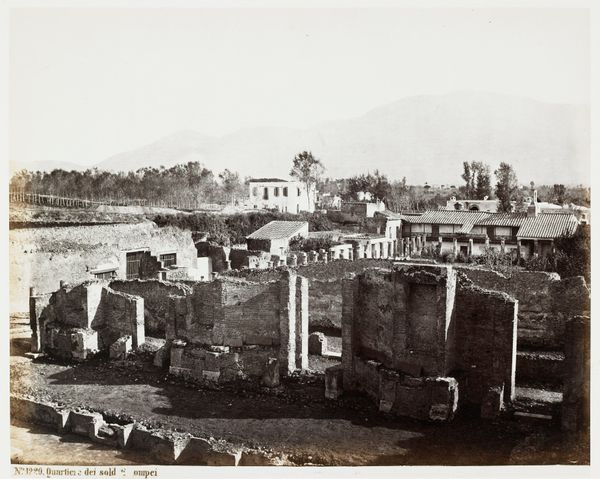
albumen-print, print, photography, albumen-print
#
albumen-print
# print
#
landscape
#
photography
#
romanesque
#
ancient-mediterranean
#
cityscape
#
history-painting
#
albumen-print
Dimensions: 7 5/8 x 9 13/16 in. (19.37 x 24.92 cm) (image)
Copyright: Public Domain
Editor: This is Giorgio Sommer's "Foro Civile," taken sometime in the 19th or early 20th century. It's an albumen print, and there’s something both serene and haunting about it. What draws your eye when you look at this photograph? Curator: The receding orthogonal lines of the forum, leading the eye towards Vesuvius, create a stark contrast between the rigid geometry of Roman architecture and the sublime form of the volcano. Observe how the photographer uses light to articulate the textures of the ruined columns and walls. The composition is highly structured, dividing the image into distinct planes. Editor: I hadn't really thought about it in terms of planes. So you’re saying the formal elements—the lines, the light—are what make it work as a photograph? Curator: Precisely. Note the strategic placement of the architectural remnants; they function as visual anchors. Sommer manipulates perspective to emphasize both the grandeur and the desolation. The limited tonal range, typical of albumen prints, adds to the photograph’s atmospheric quality. What effect does that tonal range achieve? Editor: It definitely makes it feel more distant, more historical. Less like a place, more like a memory of a place. Curator: Indeed. The lack of vivid color abstracts the scene, allowing the viewer to focus on form and structure. Consider how this abstraction shapes our understanding of the image. It isolates the pure form and the architectural qualities. Editor: This close analysis is helpful. It makes you realize it's not just a snapshot, it's a careful construction of form and light to convey an impression of time and space. Curator: It prompts questions about representation itself. Is this truly a document of the site, or an artistic interpretation employing the visual vocabulary of photography?
Comments
No comments
Be the first to comment and join the conversation on the ultimate creative platform.

